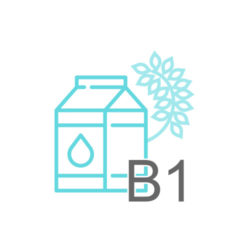Vitamin B5
Pantothenic Acid
Introduction
Pantothenic acid is found naturally in meats such as liver and kidneys, in wheat bran, rice bran, nuts, mushrooms, salmon, blue cheese, eggs, brown rice, lobster and sunflower seeds. Dietary supplements widely use synthetic calcium pantothenate, although yeast is a rich natural source.
Modern Usage
Pantothenic acid in the form of Panthoderm is a common addition to skin creams. It can be used to relieve dry skin and promote the healing of burns, minor wounds and chapped skin.
Traditional Usage
Pantothenic acid, or vitamin B5, functions in the body as part of two different enzymes - coenzyme A (CoA) and acyl carrier protein (ACP). CoA helps in transmitting nerve impulses, synthesising hormones and haemoglobin - which is essential in building blood. CoA is also essential in the maintenance of normal blood sugar and formation of antibodies. D-calcium pantothenate, a synthetically made substance, is the name for the most common form of pantothenic acid used in vitamin supplements.
*The Content is not intended to be a substitute for professional medical advice, diagnosis, or treatment. Please always seek the advice of your physician or other qualified health provider with any questions you may have regarding a medical condition.




